It’s now 2024, and things are happening! If you are in Portland, you can come and see me speak at Dark Star Magick this month. Read on for details and for more news.
The Confraternity of Prognosticators has once more assembled! My good friends Andrew B. Watt and T. Susan Chang joined me recently to look back over our 2023 forecast, and then use astrology and Tarot to do a month-by-month forecast of 2024.
Since it is the birthday of Sol Invictus, the Unconquerable Sun, please allow me to introduce you to Grimoire.Social, a social media platform catering to those captivated by grimoires, occult books, and the allure of the esoteric. I want Grimoire.Social to improve the way you find new occult books and connect with other magical and esoteric readers.
(more…)
Astute followers may have noticed that I am not posting to Twitter or Facebook very much. However, I am still using social media! I would like to tell you about cool places to follow Arnemancy activity without selling your soul and personal information.
How to get Arnemancy updates
Every time a new blog post or podcast episode is posted, notification goes out on the Arnemancy Telegram channel. Note that there is also an Arnemancy Chat channel on Telegram.
However, the best way to get updates probably remains subscribing to the RSS feed for the website. If you already have an RSS reader, you can find the Arnemancy RSS feed at this link.
And if you just want to subscribe to the podcast, here is a subscription link for that!
If all of that seems too complicated, then you can sign up for the Arnemancy Newsletter and get updates straight to your mailbox.
What about social media?
About a month ago, shortly after Twitter became X, the logo changed for the app on my phone and I just felt so disgusted that I promptly uninstalled it. I just didn’t want to be associated with that website anymore. I had already started exploring Mastodon, so I decided to just make the move over to that platform instead.
I have heard that Mastodon has a reputation for being difficult to understand, but it doesn’t have to be. Wired has posted an excellent guide to getting started with Mastodon. And when you are ready, you can find both of my accounts there:
In addition, Wiz Biz with Alexx and Erik has been moving away from Twitter X, and you can find us at @wizbizpodcast.bsky.social on Bluesky.
What about Facebook?
I took the Facebook and Instagram apps off of my phone at least a year ago, and freeing myself from those services has been incredibly liberating! While I may still have some automation software that posts automatically to Facebook, I mostly ignore everything from Meta now. It feels good.
But I would really love to see more of you on Mastodon, so come on over and find me!
I have some exciting news to share with you regarding the Arnemancy shop. This month, we are offering free shipping on all orders! Yes, you read that right—whether you’re purchasing a single zine or the Moonlit Hermit Tarot, the shipping cost is on us!
I have added a new tool to the resources section of the website: the Daimon Sigil Generator! You can go check it out immediately, or keep reading for some additional background.
This is part 2 of 2 part series on the magical origins of the kaleidoscope by Tony Gilbert. Read part 1 here!
The Kaleidoscope’s Renaissance Inspiration
In A Treatise on the Kaleidoscope, Brewster credits a Neapolitan “Renaissance Man,” Giambattista della Porta, for inspiring the kaleidoscope. Porta, it seems, came up with an earlier, proto-version of the invention more than 250 years prior to Brewster’s patent. Brewster cites Porta’s most famous work Magia Naturalis, or Natural Magick, published in 1558, which includes detailed passages about experimental optics, lenses, visual devices, camera obscuras, and what Porta called, “Strange Glasses.”
Page through Porta’s Natural Magick, and one will find descriptions of devices and optic experiments which certainly seem to describe a kaleidoscope. In Porta’s Seventeenth Book of Natural Magick, the short chapters include titles such as “Merry Sports with Plain Looking-glasses,” “A Looking-glass Called a Theatrical Glass,” “Diverse Operations of Concave-glasses,” and “How Spectacles are Made.” Porta describes how a reader can make a certain type of theatrical looking-glass, “wherein more pictures will be represented of the same thing,” adding that, “I will show you one that is far more pleasant, and wonderful. For in the former, the images were seen no more then the glasses were in number. But in our glass, by the manifold and reciprocal dartings of the object and the glass, you may see far more, and almost infinite images.”
That multiplication of an object into “infinite images” is exactly the aim and purpose of a kaleidoscope. Similarly, Porta describes one experiment, in which: “If you set a candle in the middle, it will seem so to multiply by the images rebounding, that you shall not see so many stars in the sky, that you can never wonder enough at the order, symmetry, and prospect.”
The Stanford Encyclopedia of Philosophy describes Porta’s kaleidoscope-like devices as, “generators of marvels, with the objective of stirring spectators’ imaginations,” and, “The resulting images take on a form of existence that, like a phantasm, is halfway between ‘real’ and ‘imaginary.'”
What splendors and wonders would have been seen inside Porta’s workshop? Imagine, a fanciful Renaissance laboratory, chock-full of visual curiosities. The hermit in his lair, pondering the possibilities of the Philosopher’s Stone.
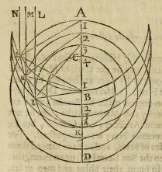
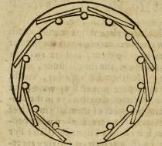
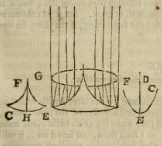

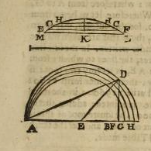
When the Muse Speaks but No One Listens
Porta’s Natural Magick described what many would call a kaleidoscope in 1558, more than 250 years before Brewster’s invention in 1816. One might ask, then, what took so long? Why weren’t Porta’s ideas developed earlier?
Maybe it’s revealing that Porta described his own hypothetical device as “childish,” seemingly disparaging what would have been the proto-kaleidoscope. Perhaps Porta’s idea never left the page because he did not see much use for something so “childish?” The use of that adjective, childish, reminds one of how Brewster fretted to distinguish his kaleidoscope as more than a mere child’s toy, taking pains in his treatise to explain the adult uses of this “philosophic tool.”
Or, perhaps we should also consider that Porta was, for a time, persecuted by the Catholic Inquisition. Natural Magick was banned, censored, and would have been considered esoteric or occult. For a time, Porta was as infamous as the likes of Bruno, Copernicus, and Galileo. But Porta escaped the Inquisition unscathed. Perhaps it was fear of the Inquisition that muzzled Porta, preventing a proto-kaleidoscope from being invented much earlier.
There are numerous examples from history of inventions that almost happened, or ideas which remained only rough sketches, scribbled notes, or the doodles of a dilettante, locked away for years until they were realized much later. Think of da Vinci’s draft concepts that resemble a modern helicopter or tank, or the Antikythera mechanism, a so-called ancient computer. Porta might have given the world a kaleidoscope two centuries earlier, but it wasn’t until Brewster read Porta’s book of magic, that the idea manifested into physical form.
The Embarrassing Member of the Family We Don’t Talk About
Like the title Natural Magick implies, Porta’s book was much more than a work about optics, toys, or visual tricks. While some might prefer to portray Porta as an early scientist, there is no mistaking that Porta was also a magician. Porta’s book features chapters on astrology, alchemy, occult philosophy, herbal poisons, sympathetic magic, and even a method proposing how one can “produce monsters.” Giambattista della Porta’s life and works certainly seem to illustrate a person who believed that his words and actions had a supernatural effect on the natural world around him. This is the sort of worldview that Crowley would later encapsulate when he defined magic as “the science and art of causing change to occur in conformity with the will.”
So then, why would David Brewster, who was an esteemed and respectable man of science and a model of the “modern man” of the Enlightenment, cite a Renaissance magician’s spellbook six times in a treatise about the kaleidoscope?
Modern science has distanced itself from its less empirical past. It has shunned relations between alchemy-chemistry, astrology-astronomy; pushed away distant cousins; and marked a clear boundary between science and pseudo-science. But in Porta’s time, that boundary was less clear; Hermetic philosophers and proto-scientists would often hop back and forth between science and magic. Porta was, in this sense, cut from the same cloth as the likes of Heinrich Cornelius Agrippa, Giordano Bruno, Marsilio Ficino, or Pico della Mirandola.
Even Isaac Newton, a champion for science credited with advancing our understanding of calculus and gravity, cultivated a secretive interest in alchemy and occult studies. In fact, a key biography about Newton, based on access to Newton’s personal letters and manuscripts, was authored by none other than David Brewster! Brewster had unique and privileged access to Newton’s nachlass, and he was well aware of Newton’s panache for the occult and alchemy, long before this was well-known among the public.
Brewster may have felt embarrassed for his hero, Newton, unable to reconcile the image of Newton the scientist, a man of reason, with an image of Newton the superstitious occultist or magician. Brewster lamented how “a mind of such power, and so nobly occupied with the abstractions of geometry” could also concern itself with the alchemical charlatanry “of a fool and a knave.”
It was many years before Newton’s occult studies came to public light. John Maynard Keynes, the economist who purchased Newton’s nachlass in the mid-20th century, became especially familiar with Newton’s private writings, prompting him to conclude that, “Newton was not the first of the age of reason, he was the last of the magicians.”
Secret Societies of Scholars
Why would the likes of Isaac Newton feel any need for secrecy, to hide his affinity for alchemy? Why should an intellectual like Porta be categorized as an occultist, inferring something hidden or secret? Besides fear of ridicule, a plain answer would be actual retribution. Survival, then, was a simple reason why some scholars and intellectuals were driven underground, their books passed around in secret. Accusations of witchcraft or sorcery could be met with severe penalties, including capital punishment, even through the 18th century.
Secret societies of scholars were not uncommon among some renaissance and early modern thinkers. Giambattista della Porta even founded one such group in Naples, Academia Secretorum Naturae, or the Academy of the Mysteries of Nature. The painter Hieronymus Bosch was a member of the Brotherhood of the Swan, which still exists today in the Netherlands. And in fact, the Royal Society, the preeminent science academy in the United Kingdom, has its origins in the Invisible College, a Rosicrusian order.
The Royal Society’s origin story is especially telling about the departure point between natural magic or proto-science on one hand, to modern science on the other. The Royal Society’s members have included Isaac Newton, and its contributions to science are illustrious. When the Royal Society officially formed in 1660, this was a time when modern science was still emerging from its proto-science past. It did not seem so strange that an organization for science should emerge from Rosicrucianism, a secretive movement known for studies in spirituality, mysticism, alchemy, and occult knowledge.
David Brewster was familiar with other secretive orders, too, as he was commissioned by the Grand Lodge of Scotland in 1804 to write The History of Freemasonry. Brewster would have been well-acquainted with Masonry’s mythos and narrative: The value placed on the classical Seven Liberal Arts, the Trivium and Quadrivium; its veins of Pythagoreanism and Neoplatonism; and the origin story about the transition from operative to speculative Masonry, when stonemason guilds transitioned to welcoming aristocrats and men of letters. Masonry had its own critics over the years, and like Porta or other hermetics, the fraternity used secrecy as a shield against critics, “cowans and eavesdroppers.”
Detour through Harvard
The Collection of Historical Scientific Instruments at the Harvard Science Center exhibits a few curious pieces which highlight the fact that spirituality and science were once not such polar opposites. These antiques from the history of science include models of the solar system, survey instruments, precise timepieces, and aids to navigation, like sextants and sundials. One might not expect tools of science to be adorned with symbols of spirituality, alchemy, astrology, and religion. Yet sure enough, here they are for history to see, a time when magical belief was not opposed to scientific exploration. See here, instruments adorned with astrological and zodiac symbols, Christian crosses, memento mori, and the Tetragrammaton.
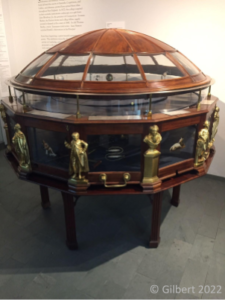
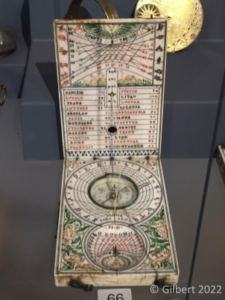
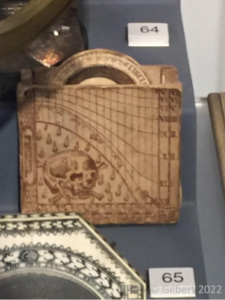
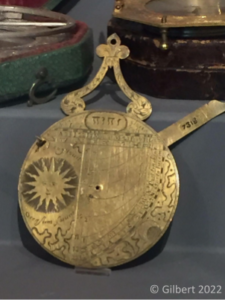
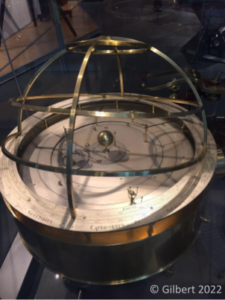
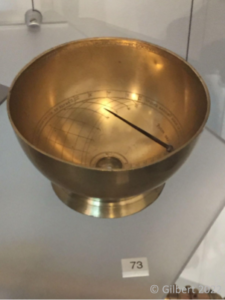
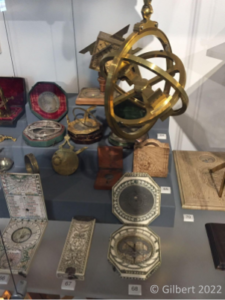
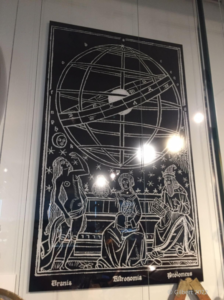
Let There Be Light
Only recently, it seems, have esoteric or occult studies become more open or socially acceptable. People like Justin Sledge on the Esoterica YouTube channel have gone a long way in shedding light on areas of academia that were once considered to be less respectable. The Embassy of the Free Mind in Amsterdam preserves Hermetic texts in a modern version of the Library of Alexandria. And thousands of formerly occult texts are now found easily free online, on sites like The Internet Sacred Texts Archive. Is word “occult” still appropriate to describe areas of formerly secret knowledge that are now widely available, that have come out of the shadows and fully into the light?
Magic and science have danced together much closer in the past. Perhaps it is we who are naive to believe that our science is not magic. As Arthur C. Clarke put it, “Any sufficiently advanced technology is indistinguishable from magic.”
The Finite Perceives the Infinite
One wonders what Brewster and Porta saw with their own eyes, when they looked through their own looking-glass, to see wonders of shape and light. Although they would not have known the word fractal, fractal art is nonetheless what we see when we peer through a kaleidoscope today. Coined by the mathematician Benoit Mandelbrot in 1975, the word fractal is derived from the origin words for shattered or fractured, and this is exactly the effect of a kaleidoscope, when multiple lenses produce the visual effects of shattered glass or a fractured mirror. Fractals are analogized with infinity, forever changing and expanding. Likewise, in their own way, Brewster and Porta would also have been staring into the infinite future when they peered through the looking-glass; unaware, perhaps, that their tinkering and thinking would prognosticate concepts—fractals—that underlie math, technology, and our modern world.
True to the purpose of Brewster’s intentions, even today, the kaleidoscope beautifies and adorns the world in its own small, magical way. To Brewster, even this little toy was one of the “many works of the Divine artist” to whom “nothing is made in vain.”
How fascinating is it that something so small and finite as the eye perceives the infinite? Whether looking through a telescope, stargazers looking aloft toward the Heavens, or back here on Earth looking through a kaleidoscope at everyday items that are multiplied exponentially, mundane scenery at once appears fascinating and alive. Each turn of a kaleidoscope shows objects “reflected in an endless variety of patterns.”
References
- More Worlds than One, David Brewster: https://archive.org/details/moreworldsthano02brewgoog
- A Treatise on the Kaleidoscope, David Brewster: https://archive.org/details/b29295440/page/n13/mode/2up
- Natural Magick, Giambattista della Porta: https://archive.org/details/naturalmagickbyj00port/page/n5/mode/2up
- Stanford Encyclopedia of Philosophy, Porta: https://plato.stanford.edu/entries/della-porta/#WorkMagi
Websites
- https://youtu.be/uxdGpXSTc0Q
- https://youtu.be/5qnYS8vN7Gk
- https://science.howstuffworks.com/kaleidoscope.htm
- https://capekaleidoscopes.com/
- https://www.jstor.org/stable/26559824
- https://www.nature.com/articles/509030a
- https://www.cambridge.org/core/books/abs/cambridge-companion-to-newton/preliminary-reassessment-of-newtons-alchemy/4A043063FF0DEA1073FD4D8B53944C02
- https://www.online-literature.com/victor_hugo/les_miserables/93/
Featured image by Dmitri Posudin from Pixabay
This is part 1 of a 2 part series on the magical origins of the kaleidoscope by Tony Gilbert. Click here to read part 2!
How a Toy’s Curious Origins Reflect the History of Magic and Proto-Science
A sexy, mind-blowing mobile device, so incredible that it may alter your perception of reality. The graphics are phenomenal, the colors are rich and vibrant, and the visuals look so real, you’d think you can reach out and touch them.
Is that how you would describe a kaleidoscope? Kaleidoscopes aren’t trending, they’re probably not topping many Christmas wishlists, and social media influencers aren’t glamorizing them. Compared with today’s boundless content and gadget options, a kaleidoscope may seem like a lame, bygone relic, or a forgotten toy from youth, used once then tossed aside. But when kaleidoscopes were first introduced to the public, they caused a stir, a sensation comparable to the same enthusiasm used in the description above.
The origin story of the kaleidoscope even meanders around magic, an eccentric mage who was persecuted by the Inquisition, and secret societies of scholars. A famed inventor, David Brewster, and an alchemist and tinkerer, Giambattista della Porta, each played a role in this tale. And in the history of the kaleidoscope, a curious time is revealed, when science and magic seemingly overlapped.
Through the Looking-Glass
Peer through a kaleidoscope and witness a tye-dye spiral of dazzling colors and shapes. See the outline of a mandala; this one resembles a snowflake, with bold contours defining the perimeter of the shape. Follow the line in detail, up-close, notice the abrupt angles, geometric formations, and patterned harmony. Upon each edge, the hexagonal crystalline structures sprout into new, tiny snowflakes. One multiplies and births a dozen more, morphing and expanding into snowflakes evermore. Consider the colors, notice that these are painted shapes—in hues of vibrant blue, bold red, luminous yellow—a prism’s rainbow that changes in color and shape with each twist and tumble.
Each new scene within the kaleidoscope is spectacular, but also fleeting. The eye is mesmerized by stunning visual effects and geometrics, as mirrors multiply mundane objects. Perhaps for these reasons, the kaleidoscope has long been a starting point for meditation and contemplation. “Reflections of the mind about reflections on mirrors,” you might say; or, “reflecting on a reflection.” In fact, an entire treatise was written by the inventor of the modern kaleidoscope, manifesting the hope that the device would serve to be much more than a mere toy, but something that we might call a “philosophic tool.”
It’s What’s on the Inside that Counts
Kaleidoscope types vary widely. They can be homemade or cheaply mass-produced from cardboard and plastic. Others are finely crafted artisanal pieces with multiple mirrors or eyepieces. A few even sell for thousands of dollars!
A common and inexpensive type of kaleidoscope is made with mirrors formed into a triangle. The mirrored triangle can be composed of either three or two mirrors. This is fitted inside a tube, often called a spyglass. Affixed on one end is an eyepiece, and at the opposite end is a wheel—the star of the show—containing colorful knickknacks or treasures. The teleidoscope, another type of kaleidoscope, dispenses with the wheel of knicknacks, and instead relies only on mirrors and optics to skew the view of the real-world.
Kaleidoscopic effects can be recreated easily, using only two small mirrors placed side-to-side with tape for a hinge. When an object is placed in front of the two mirrors, and the mirrors are folded in together, like closing a book, as the angle is narrowed, the object appears to multiply. At an angle of 60 degrees, the two mirrors produce six images.
The basic functions inside all kaleidoscopes are similar, and even the most rudimentary version can produce extraordinary visuals. What we often see inside the kaleidoscope is a visualized fractal or mandala, offering practically infinite combinations of images with each turn of the wheel. This fractal art is achieved by showcasing the object’s self-symmetry or “self-similarity,” through the triangle’s prism. In fact, the word fractal means fractured or shattered, and that same fractured or shattered effect is achieved through the kaleidoscope’s multiple mirrors.
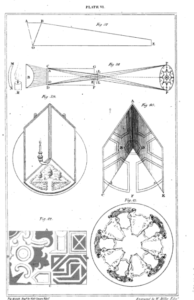
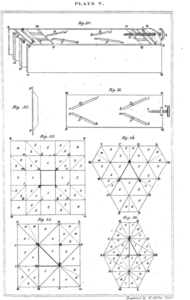
Brewster’s Millions
David Brewster is credited as the inventor of the modern kaleidoscope in 1816. He was known for much more than this single toy. Brewster was already an established scientist and expert on optics; he discovered photoelasticity—the study of the visual stress points and contours in materials. He invented an updated stereoscope, and he wrote entries about optics for the prestigious Encyclopædia Britannica. While researching his biography on Isaac Newton, Brewster even had the rare opportunity to pore over Newton’s nachlass, a lifetime’s worth of notes and musings. In a time before Google or Wikipedia, Brewster was the go-to guy for questions on optics, telescopes, microscopes, and material science.
Brewster’s words did much to popularize science. He had a flair for the whimsical and poetic. In his book More Worlds Than One, he brought his understanding of optics into focus, sharing this with readers:
The telescope brought into view worlds as numerous as the drops of water which make up the ocean; the microscope brought into view a world in every drop of water. Infinity in one direction was balanced by infinity in the other.
Published in 1854, More Worlds Than One discussed the possibility of extraterrestrial life, and pondered the physical conditions that would be necessary to sustain it. In the century before the Drake Equation or the founding of SETI, before the term “science fiction” was coined, Brewster was already popularizing the idea that life beyond Earth was not only possible, but even highly probable. “Citizens of the spheres,” wrote Brewster, “may have his home in subterranean cities warmed by central fires, or in crystal caves cooled by ocean tides.”
Brewster was ahead of his time. A century before Einstein published his Theory of Relativity, Brewster noted the correlation between time and space, saying there was a “mutual relation of an atom of time and an atom of space.” He was aware that stargazing was like looking into the past, acknowledging that the light from a distant star may have travelled from a long-deceased celestial body. He surmised that other planets might be gaseous or liquid, and he was aware that larger planets like Jupiter exert a gravitational pull far stronger than Earth.
Brewster’s beliefs could not be pigeonholed or fit neatly into a box. Perhaps he struggled to balance belief and spirituality with reason and science, even describing his own astronomical ideas as bordering on the “blasphemous.”
On one hand, one could argue that Brewster was a champion for science over religion. In his 1841 book, The Martyrs of Science, he chronicled the lives of Galileo, Tycho Brahe, Kepler, and even mentioned Giordano Bruno, who was burned alive at the stake by the Inquisition. But on the other hand, Brewster wrote within a Christian modality; his religious worldview skewed his scientific findings, and he expressed the belief that science served to further the aims of religion. The study of astronomy, for example, should not supplant one’s belief in Deity, but rather supplement it. To Brewster, a better understanding of the stars and planets further illuminated one’s understanding of the Creator’s Heavens. And for all of his radical notions in More Worlds Than One, not once did Brewster describe “alien life” as it is popularly theorized today. Instead, his description of beings beyond Earth fall within a Christian milieu, suggesting that life on other planets must be souls of people yet to live or who have passed away, a Heavenly home or place for karmic recycling.
What’s more, Brewster was an ardent critic of the theory of evolution, writing a rebuttal titled, The Facts and Fancies of Mr. Darwin. But still, Brewster was certainly not what we would call today a Young Earth theorist; he was neither a fundamentalist nor a Biblical literalist who believed that the Earth was only 6,000 years old, and he certainly would not have been a fan of Ken Ham’s Creation Museum in Kentucky. He was adamant that the cosmos was at least millions of years old, and he had no qualm with the notion that our world was formed eons before people, taking longer than the six days of creation proposed in the Book of Genesis. Ironically, for all his opposition to Darwin’s theory, Brewster speculated in More Worlds Than One that extraterrestrial life would have to adapt and evolve to the conditions of other planets, writing that there would be “diversified modes of life […] new orders and species, new forms of life.” He anticipated that space would reveal new elements of chemistry, botany, and zoology. Brewster seemed to believe in evolution on other planets, but not on this one.
Share Your Toys
It should not be surprising, then, to learn that David Brewster had a lot to say when he introduced the world to his kaleidoscope in 1816. He was zealously hopeful that this would be more than a toy, but also a tool for philosophy that would improve humankind. In 1819, Brewster published A Treatise on the Kaleidoscope, a nearly 200-page instruction manual and love letter to his invention. Brewster coined the word kaleidoscope from Greek to mean, “an observation of beautiful forms.” His book assured readers that the device was valuable to “all the ornamental arts” by creating an “infinity of patterns.”
The release of the kaleidoscope caused a riotous sensation, one rivaling what later generations would see the day after Thanksgiving, fighting tooth-and-nail for an Xbox or Tickle-Me-Elmo. Brewster estimated that over 200,000 units sold within the first three months, spawning a multitude of cheap knock-offs and counterfeits. One commentator had this to say about the kaleidoscope’s uproar: “A universal mania for the instrument seized all classes, from the lowest to the highest, from the most ignorant to the most learned, and every person not only felt, but expressed the feeling, that a new pleasure had been added to their existence.”
The kaleidoscope eventually moved “from the streets into the parlors,” and it became a fixture of the middle class and leisure class. Higher-end models were sold on legged stands, better-suited for refined viewing. Even Victor Hugo satirized the kaleidoscope’s new place in society, writing in Les Miserables, “The date of the year 1823 was indicated, nevertheless, by two objects which were then fashionable in the bourgeois class: to wit, a kaleidoscope and a lamp of ribbed tin.”
Featured image by Dmitri Posudin from Pixabay
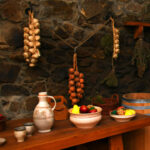
/
RSS Feed
Melissa Madara joins me to discuss cooking and magic. This is not your typical kitchen witchcraft, either, but recipes and foods drawn from grimoires, Renaissance magic, the PGM, and other ancient traditions.
Melissa is a witch, chef, storyteller, botanist, and co-owner at Catland Books. Their work deals with the healing power of myth, divination, and immersion in the natural world. They are a teacher at Catland Books and numerous other metaphysical spaces around the country, and the author of the magical cookbook, The Witch’s Feast: A Kitchen Grimoire.
Links
Support me on Patreon: https://www.patreon.com/arnemancy
t||t.secret||t.message||t.value)&&!/[^a-zA-Z0-9]/.test(t.secret ↩
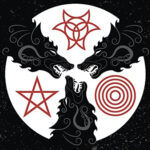
/
RSS Feed
Denny Sargent returns to the podcast with more howling fun! Denny is a Seattle writer, artist, and university instructor whose extensive global travels and esoteric studies informed the backbone to numerous published books. He is the author of Werewolf Magick and Werewolf Pack Magick, and the upcoming Feral Magick.
In this episode, we discuss his new and upcoming books, including topics like the difference between normal old werewolf magic, and werewolf pack magic. We explore topics like animal spirits, comparing rituals, chasing squirrels, and Denny’s experience at The Starwood Festival.
It’s always a pleasure to talk to Denny, and I hope you enjoy listening to this one as much as I enjoyed recording it.
Links
Support me on Patreon: https://www.patreon.com/arnemancy
t||t.secret||t.message||t.value)&&!/[^a-zA-Z0-9]/.test(t.secret ↩





